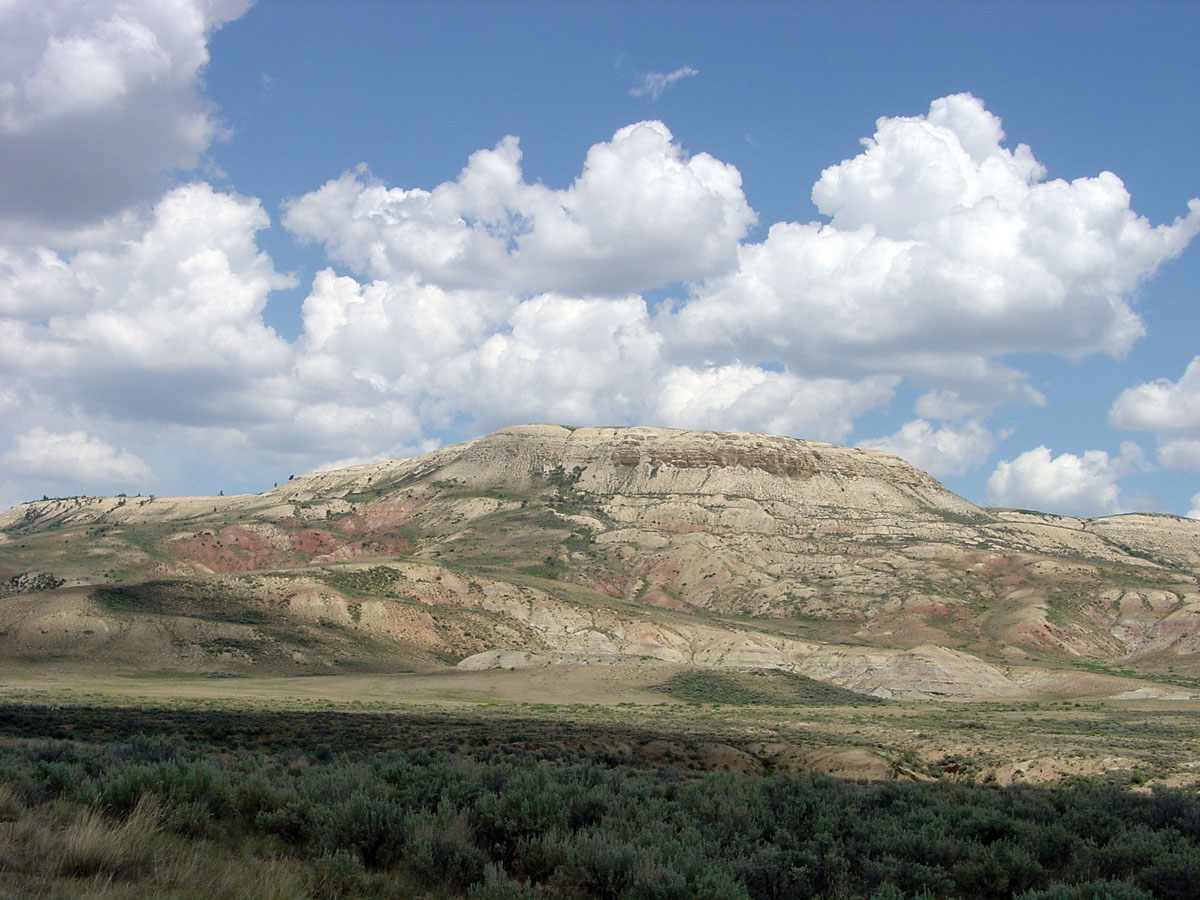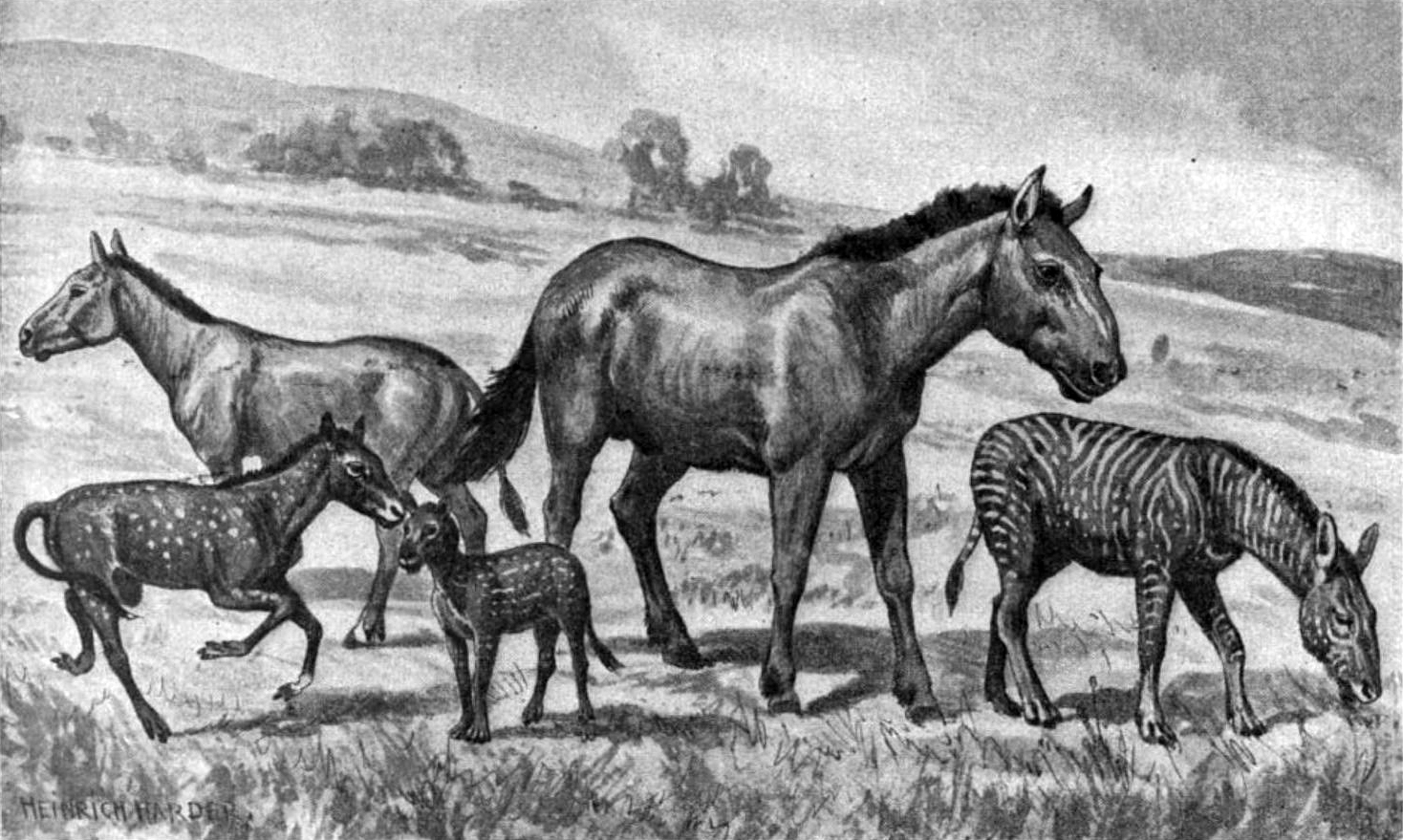|
Indian Meadows Formation
The Indian Meadows Formation is a Wasatchian geologic formation in Wyoming. It preserves fossils dating back to the Ypresian stage of the Eocene period.Indian Meadows Formation at .org Fossil content The following fossils have been reported from the formation:Winterfeld & Conard, 1983Keefer & Troyer, 1964Mammals ;Primates * '' Absarokius abbotti'' * ''[...More Info...] [...Related Items...] OR: [Wikipedia] [Google] [Baidu] |
Formation (stratigraphy)
A geological formation, or simply formation, is a body of rock having a consistent set of physical characteristics (lithology) that distinguishes it from adjacent bodies of rock, and which occupies a particular position in the layers of rock exposed in a geographical region (the stratigraphic column). It is the fundamental unit of lithostratigraphy, the study of strata or rock layers. A formation must be large enough that it can be mapped at the surface or traced in the subsurface. Formations are otherwise not defined by the thickness of their rock strata, which can vary widely. They are usually, but not universally, tabular in form. They may consist of a single lithology (rock type), or of alternating beds of two or more lithologies, or even a heterogeneous mixture of lithologies, so long as this distinguishes them from adjacent bodies of rock. The concept of a geologic formation goes back to the beginnings of modern scientific geology. The term was used by Abraham Gottlob W ... [...More Info...] [...Related Items...] OR: [Wikipedia] [Google] [Baidu] |
Paramys
''Paramys'' is an extinct genus of rodents from North America, Europe, and Asia. It is one of the oldest genera of rodents known and probably lived in trees. While the genus name literally means "near a mouse", it coexisted with ''Thisbemys'', a similar rodent, thus yielding a reference to Pyramus and Thisbe Pyramus and Thisbe are a pair of ill-fated lovers whose story forms part of Ovid's ''Metamorphoses''. The story has since been retold by many authors. Pyramus and Thisbe are two lovers in the city of Babylon who occupy connected houses. Their .... References Further reading * Matthew, W. D. 1910. On the osteology and relationships of ''Paramys'' and the affinities of the Ischyromyidae. ''Bulletin of the American Museum of Natural History'', 28:43–72. * Kenneth D. Rose, 2006. ''The Beginning of the Age of Mammals''. The Johns Hopkins University Press. Baltimore MD. pp. 306–335 * Kenneth D. Rose and Brenda J. Chinnery. The Postcranial Skeleton of Early Eocene ... [...More Info...] [...Related Items...] OR: [Wikipedia] [Google] [Baidu] |
Claron Formation
The exposed geology of the Bryce Canyon area in Utah shows a record of deposition that covers the last part of the Cretaceous Period and the first half of the Cenozoic era in that part of North America. The ancient depositional environment of the region around what is now Bryce Canyon National Park varied from the warm shallow sea (called the Cretaceous Seaway) in which the Dakota Sandstone and the Tropic Shale were deposited to the cool streams and lakes that contributed sediment to the colorful Claron Formation that dominates the park's amphitheaters. Other formations were also formed but were mostly eroded following uplift from the Laramide orogeny which started around 70 million years ago ( mya). This event raised the Rocky Mountains far to the east and caused the retreat of the sea that covered the Bryce Canyon area. After Laramide mountain building came to an end, about 15 mya, a large part of western North America began to be stretched into the nearby Basin an ... [...More Info...] [...Related Items...] OR: [Wikipedia] [Google] [Baidu] |
DeBeque Formation
The DeBeque Formation is a geologic formation in Colorado's Piceance Basin,Bown & Kihm, 1981 preserving fossils which date back to the Late Paleocene to Early Eocene period ( Clarkforkian to Wasatchian in the NALMA classification.DeBeque Formation at .orgHirsch et al., 1997 Examples of these fossils are held in the . Wasatchian correlations ...[...More Info...] [...Related Items...] OR: [Wikipedia] [Google] [Baidu] |
Wasatch Formation
The Wasatch Formation (Tw)Shroba & Scott, 2001, p.3 is an extensive highly fossiliferous geologic formation stretching across several basins in Idaho, Montana Wyoming, Utah and western Colorado.Wasatch Formation at .org It preserves dating back to the period. The formation de ... [...More Info...] [...Related Items...] OR: [Wikipedia] [Google] [Baidu] |
North American Land Mammal Age
The North American land mammal ages (NALMA) establishes a geologic timescale for North American fauna beginning during the Late Cretaceous and continuing through to the present. These periods are referred to as ages or intervals (or stages when referring to the rock strata of that age) and were established using geographic place names where fossil materials were obtained. System The North American land-mammal-age system was formalized in 1941 as a series of provincial land-mammal ages. The system was the standard for correlations in the terrestrial Cenozoic record of North America and was the source for similar time scales dealing with other continents. The system was revised into a formal chronostratigraphic system. This approach is nominally justified by international stratigraphic codes; it holds that first appearances of individual species in particular sections are the only valid basis for naming and defining the land-mammal ages. The basic unit of measure is the first/last ... [...More Info...] [...Related Items...] OR: [Wikipedia] [Google] [Baidu] |
Oxyaenidae
Oxyaenidae ("sharp hyenas") is a family of extinct carnivorous placental mammals. Traditionally classified in order Creodonta, this group is now classified in its own order Oxyaenodonta ("sharp tooth hyenas") within clade Pan-Carnivora in mirorder Ferae. The group contains four subfamilies comprising fourteen genera. Oxyaenids were the first to appear during the late Paleocene in North America, while smaller radiations of oxyaenids in Europe and Asia occurred during the Eocene. Etymology The name of order Oxyaenodonta comes , name of hyena genus '' Hyaena'' and . The name of family Oxyaenidae comes , name of hyena genus ''Hyaena'' and taxonomic suffix " -idae". Description They were superficially cat-like mammals that walked on flat feet, in contrast to modern cats, which walk and run on their toes. Anatomically, characteristic features include a short, broad skull, deep jaws, and teeth designed for crushing rather than shearing, as in the hyaenodonts or modern cats. Oxyaen ... [...More Info...] [...Related Items...] OR: [Wikipedia] [Google] [Baidu] |
Ectocion
''Ectocion'' (sometimes ''Ectocyon'') is an extinct genus of placental mammals of the family Phenacodontidae. The genus was earlier classified as ''Gidleyina'' (Simpson 1935) and ''Prosthecion'' (Patterson and West 1973). Retrieved May 2013. Paleocene specimens of these hoofed, ground-dwelling herbivores have been found in Canada (Alberta, Saskatchewan) and the United States (Colorado, Montana, North Dakota, and Wyoming). Eocene specimens have been found in Mexico and the United States (Colorado, Mississippi, Wyoming). One of the dramatic effects of the Paleocene–Eocene Thermal Maximum (PETM) was some animals evolving smaller bodies. Fossilized ''Ectocion'' jaw bones show that this genus was smaller during (''E. parvus'', 55.5 mya Mya may refer to: Brands and product names * Mya (program), an intelligent personal assistant created by Motorola * Mya (TV channel), an Italian Television channel * Midwest Young Artists, a comprehensive youth music program Codes * ... [...More Info...] [...Related Items...] OR: [Wikipedia] [Google] [Baidu] |
Phenacodus
''Phenacodus'' (Greek: "deception" (phenax), "tooth' (odus)) is an extinct genus of mammals from the late Paleocene through middle Eocene, about 55 million years ago. It is one of the earliest and most primitive of the ungulates, typifying the family Phenacodontidae and the order Perissodactyla. Description The typical ''Phenacodus primaevus'' was a relatively small ungulate about long and weighed up to , of slight build, with straight limbs each terminating in five complete toes, and walking in the digitigrade fashion of the modern horse. The middle toe was the largest, and the weight of the body was mainly supported on this and the two adjoining digits, which appear to have been encased in hooves, foreshadowing the tridactyl type common in perissodactyls and certain extinct groups of ungulates. The skull was small, with proportionately minute brain; and the arched back, strong lumbar vertebrae, long and powerful tail, and comparatively feeble fore-quarters all proclaim kinsh ... [...More Info...] [...Related Items...] OR: [Wikipedia] [Google] [Baidu] |
Hyopsodus
''Hyopsodus'' is a genus of extinct early ungulate mammal of the family Hyopsodontidae, a group associated with or basal to the Perissodactyla. Fossils of this genus have been found in the Eocene of North America, especially the Bighorn Basin region of the United States. It has also been found in Eurasia. Taxonomy Eighteen species of Hyopsodus have been described from North America, four from Asia, and two from Europe. The exact number and identity of species has been contested, as is common when taxa are erected based on fragmentary materials. However, there is broad agreement that multiple species in the genus lived in the Wasatchian, Uintan, and Bridgerian North American Land Mammal Ages, and they have been used both to reconstruct paleoenvironments and to study evolutionary change. Appearance and habits Members of the genus had a long spinal column with short limbs and tail, making them one of the few genera of Paleogene mammal with a common name: "tube-sheep" Rec ... [...More Info...] [...Related Items...] OR: [Wikipedia] [Google] [Baidu] |
Equidae Indet
Equidae (sometimes known as the horse family) is the taxonomic family of horses and related animals, including the extant horses, asses, and zebras, and many other species known only from fossils. All extant species are in the genus '' Equus'', which originated in North America. Equidae belongs to the order Perissodactyla, which includes the extant tapirs and rhinoceros, and several extinct families. The term equid refers to any member of this family, including any equine. Evolution The oldest known fossils assigned to Equidae were found in North America, and date from the early Eocene epoch, 54 million years ago. They were once assigned to the genus ''Hyracotherium'', but the type species of that genus is now regarded as a palaeothere. The other species have been split off into different genera. These early equids were fox-sized animals with three toes on the hind feet, and four on the front feet. They were herbivorous browsers on relatively soft plants, and already adapted ... [...More Info...] [...Related Items...] OR: [Wikipedia] [Google] [Baidu] |
Homogalax
''Homogalax'' (from the Greek "ομογάιαξ") is an extinct genus of tapir-like odd-toed ungulate. It was described on the basis of several fossil finds from the northwest of the USA, whereby the majority of the remains come from the state of Wyoming. The finds date to the Lower Eocene between 56 and 48 million years ago. In general, ''Homogalax'' was very small, only reaching the weight of today's peccaries, with a maximum of 15 kg. Phylogenetic analysis suggests the genus to be a basal member of the clade that includes today's rhinoceros and tapirs (collectively called Ceratomorpha). In contrast to these, ''Homogalax'' was adapted to fast locomotion.Holbrook, LT; Lucas, SG; and Emry, RJ; "Skulls of the Eocene Perissodactyls (Mammalia) ''Homogalax'' and ''Isectolophus''." ''Journal of Vertebrate Paleontology 24''. (4) 951-956. Description ''Homogalax'' was a small representative of the basal odd-toed ungulates. In general, it resembled other, basal forms of the order P ... [...More Info...] [...Related Items...] OR: [Wikipedia] [Google] [Baidu] |



